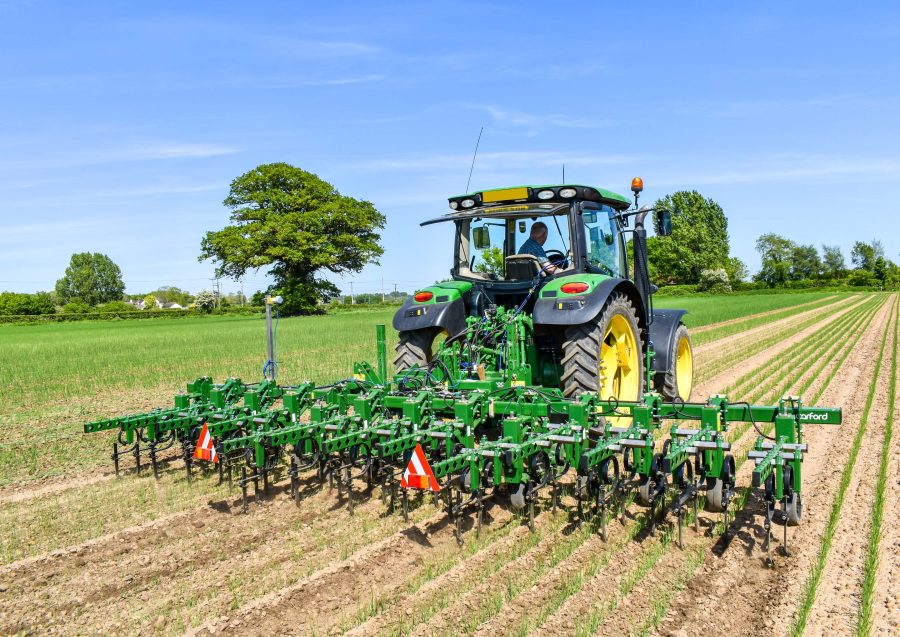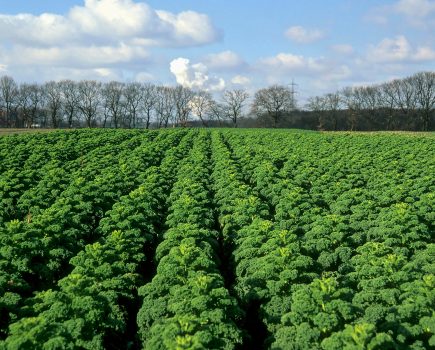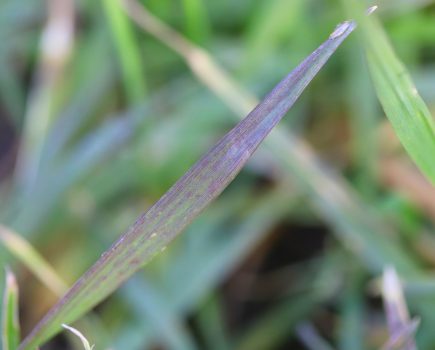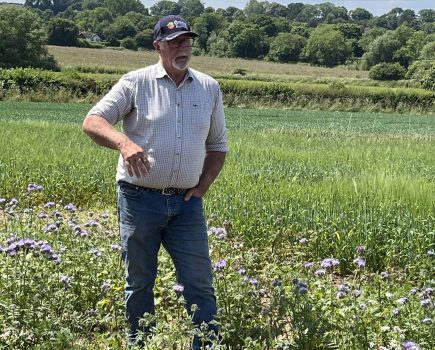Mechanical hoes a key component to the future of weed control in sustainable broadacre arable crop production
A combined approach to weed control can help reduce reliance on chemical inputs by incorporating the use of mechanical weed control alongside reduced herbicide programmes, according to latest research from NIAB.
Non-chemical approaches to weed control, including the mechanical inter-row hoe, have the potential to help off-set herbicide resistance and substantially reduce reliance on herbicides in conventional broadacre arable crops, according to the research.
Part of an EU-funded Horizon integrated weed management project (IWMPraise – No. 727321), the research undertaken by NIAB research agronomist Will Smith, alongside John Cussans, NIAB weed biology and management specialist, looked at different pathways to weed control, specifically the control of black-grass in winter wheat.
The ultimate aim of the project was to look at ways of reducing reliance on herbicides in line with impending controls on the use of pre-emergence herbicides and chemical applications, balancing with EU-wide herbicide reduction programmes that are targeting a 50% reduction by 2030.
While these targets do not directly apply to the UK per-se, similar projected reduction targets can be anticipated in this country, and this will also directly impact trading within EU member states, and potentially further afield as other territories align Net Zero targets.
“Development in the weed control sector is going to be led by non-chemical solutions,” explains Mr Smith. “This means consideration of cultural, non-chemical and biological pathways. We also need to look at continued herbicide development, particularly the potential to off-set resistance.”
Cultural factors include decisions based on crop rotation, crop choice and drilling dates, while biological controls include classic biocides and bio-stimulants, as well as non-synthetic herbicides such as organic acids.
The main interest of the research was the integration of mechanical weeding solutions, specifically looking at inter-row cultivation (IRC), enabling more aggressive cultivation, removing more established weeds, while also remaining spatially selective to minimise crop damage.
Using Garford Farm Machinery Robocrop inter-row hoe, the headline findings from the PhD research found that there was an additional 15% control of black-grass heads when adding IRC to a herbicide programme on narrow rows, and double this in wide rows.
“Inter-row cultivation adds an appreciable level of control of between 15-25% when combined with herbicides,” says Mr Smith. “The sweet spot of course is to use IRC in combination with reduced chemical inputs to meet the reduction targets.”
Looking at margins over weed control, a combination of IRC and herbicides is comparable to the use of herbicides alone, while on sites where black-grass is low, IRC alone can actually be preferential.
According to Mr Smith, the key is changing mind-sets, as many conventional growers do not consider mechanical weeding as an option, and few growers fully evaluate weed control.
“What our research indicates is that growers can achieve at least the same or marginally better margins over weed control than currently used methods, with the scope to deliver effective weed control while reducing reliance on chemical solutions,” he says.
Crucially, even considering the one-off purchase of new equipment, the additional costing of new tools for inter-row cultivation in combination with farm standard practices has been calculated at just £15/ha based on 2 passes. For larger scale operations that may fall below £10/ha.
“The research demonstrates the benefits of integrating our range of precision guided hoes in broadacre arable crops, for both conventional and organic systems,” explains Allan Knight, Garford Farm Machinery technical sales and marketing manager.
Garford’s precision guided mechanical weeders not only remove weeds, but also promote many advantages for both the soil and the crop plants. A mechanical weeder will break up crusted and puddled top soil, promote the water retaining ability of the soil and microbial activity, thereby mobilising nutrients and N minerals.
In addition, as the latest research attests, hoeing also offers the potential to significantly reduce the input of chemicals.
“As agrochemicals are withdrawn from the market, more and more conventional farmers are beginning to appreciate hoes as a more appropriate solution, in combination with other weed controls,” says Mr Knight.
“While previously non-chemical approaches have been seen as an expensive add-on to conventional herbicide programmes, the addition of mechanical weed control products as part of an integrated weed management system offers a cost-effective and sustainable solution to growers,” he concludes.








